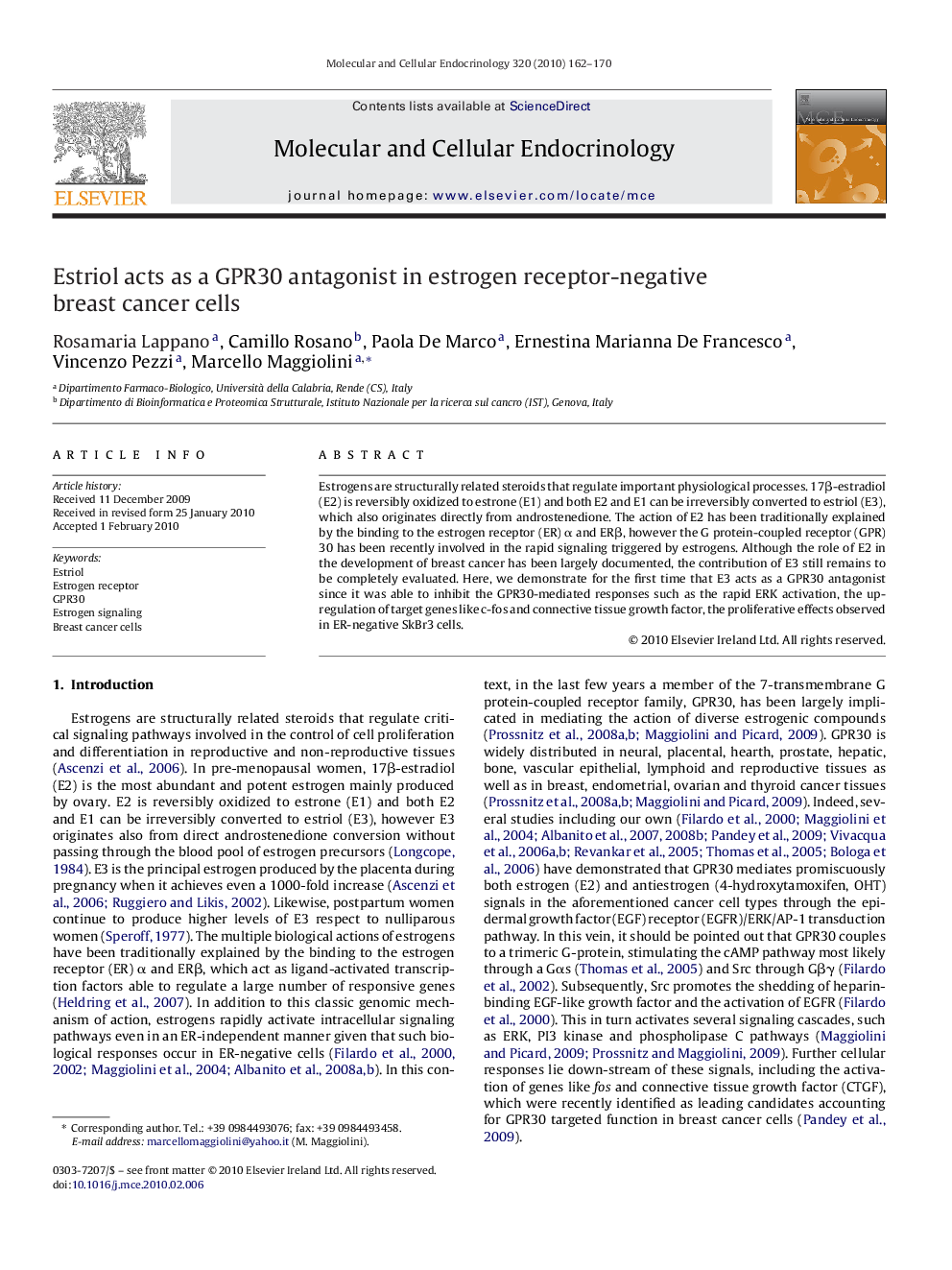| Article ID | Journal | Published Year | Pages | File Type |
|---|---|---|---|---|
| 2196914 | Molecular and Cellular Endocrinology | 2010 | 9 Pages |
Estrogens are structurally related steroids that regulate important physiological processes. 17β-estradiol (E2) is reversibly oxidized to estrone (E1) and both E2 and E1 can be irreversibly converted to estriol (E3), which also originates directly from androstenedione. The action of E2 has been traditionally explained by the binding to the estrogen receptor (ER) α and ERβ, however the G protein-coupled receptor (GPR) 30 has been recently involved in the rapid signaling triggered by estrogens. Although the role of E2 in the development of breast cancer has been largely documented, the contribution of E3 still remains to be completely evaluated. Here, we demonstrate for the first time that E3 acts as a GPR30 antagonist since it was able to inhibit the GPR30-mediated responses such as the rapid ERK activation, the up-regulation of target genes like c-fos and connective tissue growth factor, the proliferative effects observed in ER-negative SkBr3 cells.
